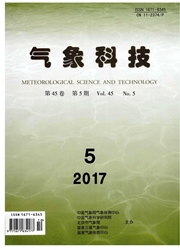

 中文摘要:
中文摘要:
应用西北地区194个气象站1961~2001年初夏6月冰雹日数资料,研究了西北地区初夏冰雹发生日数的时空分布特征,讨论了典型多雹年和少雹年大尺度环流的气候特征。结果表明:西北地区初夏冰雹发生日数最高的地方在天山山脉西端、沿祁连山脉及其以南的青海大部(除柴达木盆地)和甘肃甘南高原等海拔较高的地方。在冰雹发生日数最高的地方年代际变化明显,而在冰雹发生日数偏少的地方年代际变化不明显。另外多雹年和少雹年的北半球极涡中心强度、高原高度场、印缅槽、欧洲环流C型天数等环流特征量以及北半球500hPa环流形势和OLR场均存在着明显差异。
 英文摘要:
英文摘要:
The temporal and spatial distributions of hails are studied based on the data of the number of monthly hail days in early summer (from 1961 to 2001 ) at 194 stations in Northwest China, and the climate characteristics of the circulation patterns in typical more/less-than-normal hail years are discussed. The results indicate that hail events occurs more frequently in such areas as the Pamirs Plateau in Xinjiang, the area along the Qilian Mountain and the most part of Qinghai Province south of the Qilian Mountain (except for the Chaidamu basin), and the high-elevation areas of the Southern Gansu plateau. There is more obvious interdecadal variation in hailing days over the area with the greater number of hailing days, and vice versa. The numbers of hailing days exhibited an increasing trend from the 1960s to the middle 1970s, with its peak in 1977 and the years of high-frequency hail events concentrated around the 1970s. From the 1980s, the numbers of hailing days exhibited a decreasing trend with the minimum in 2001. In addition, there are significant differences in the polar vortex, height fields over the Tibetan Plateau, trough over India and Burma, circulation patterns over Europe, and 500 hPa circulation patterns and OLR in the Northern Hemisphere in more/less-than-normal hail years.
 同期刊论文项目
同期刊论文项目
 同项目期刊论文
同项目期刊论文
 期刊信息
期刊信息
